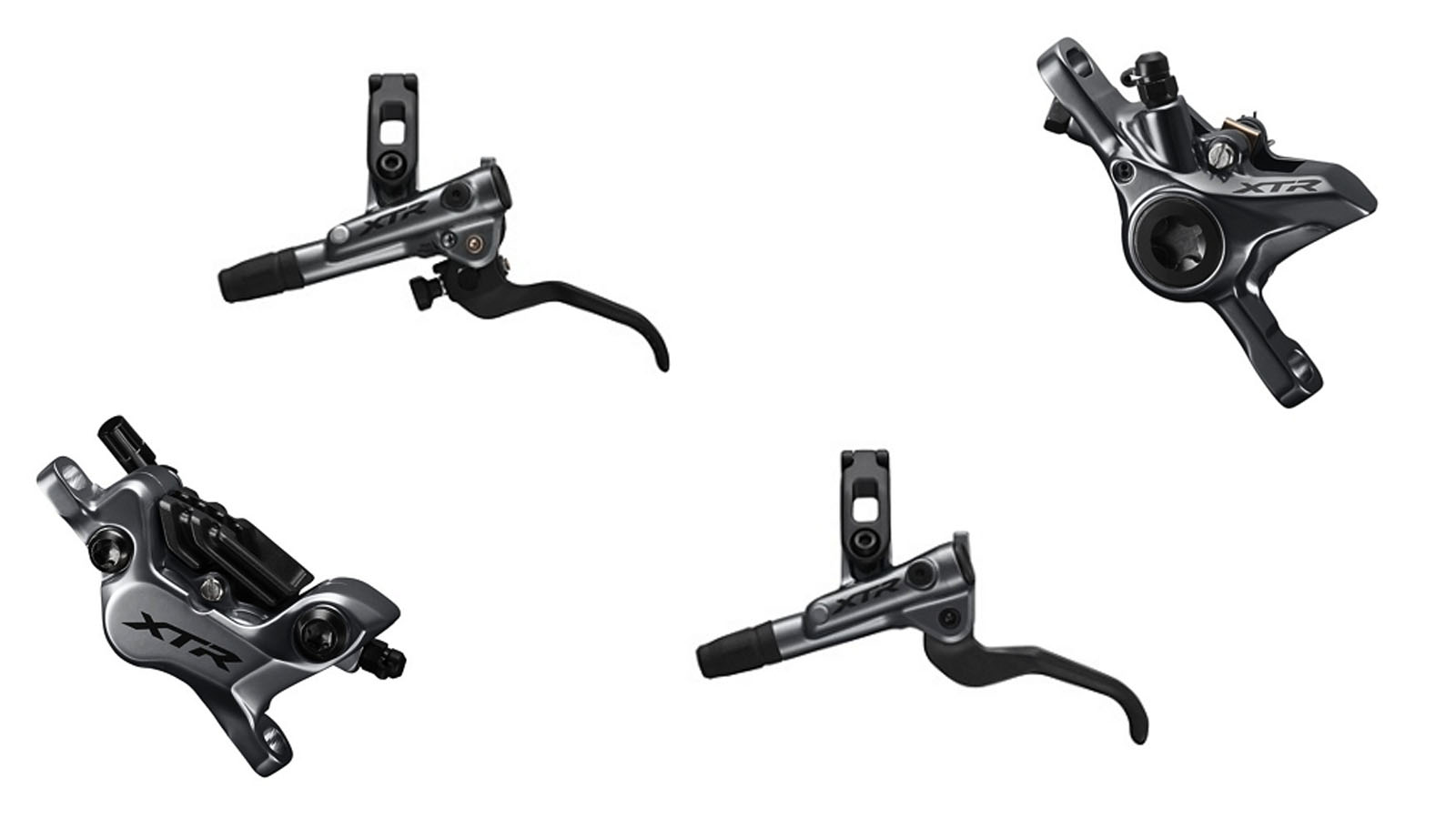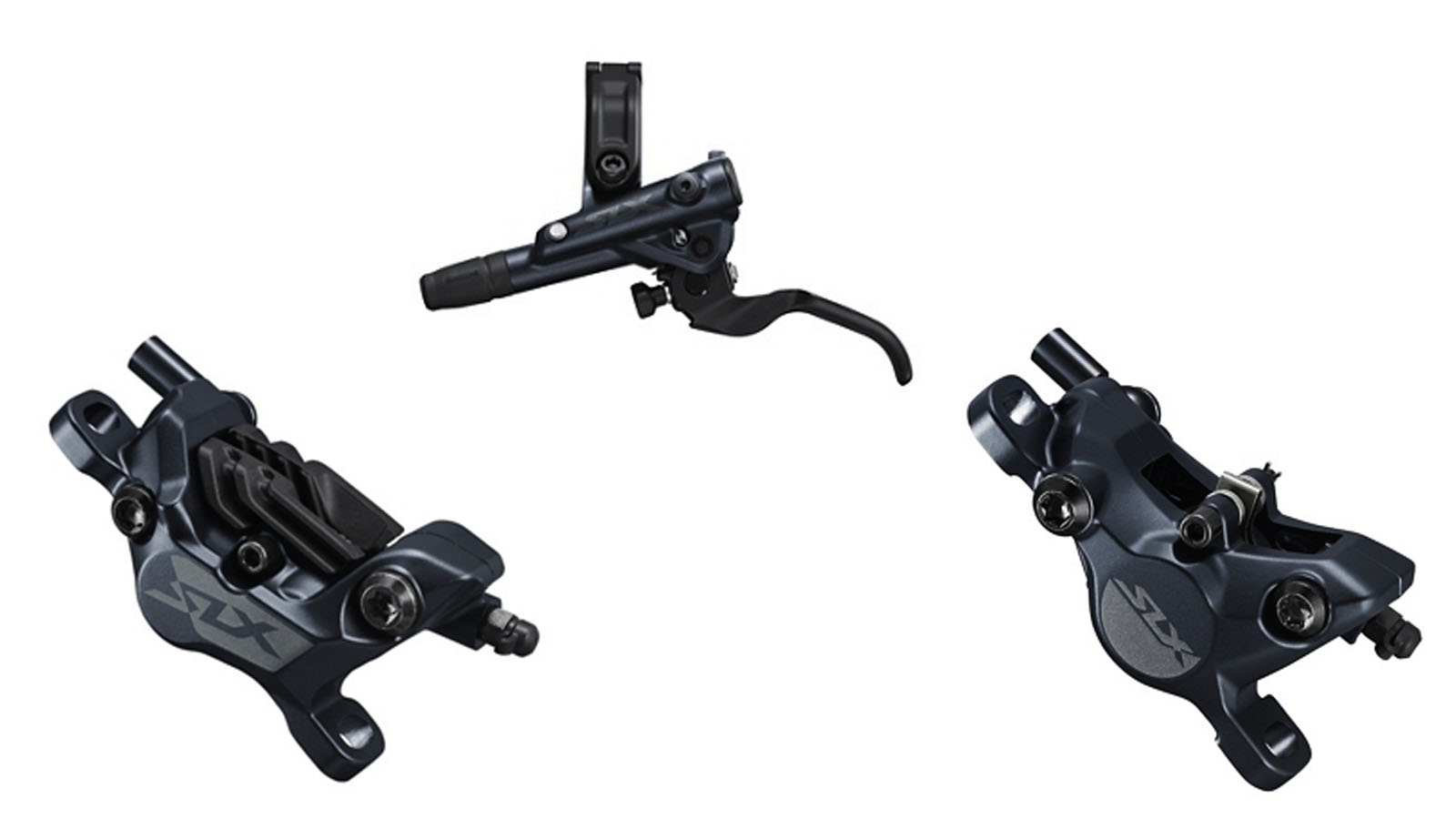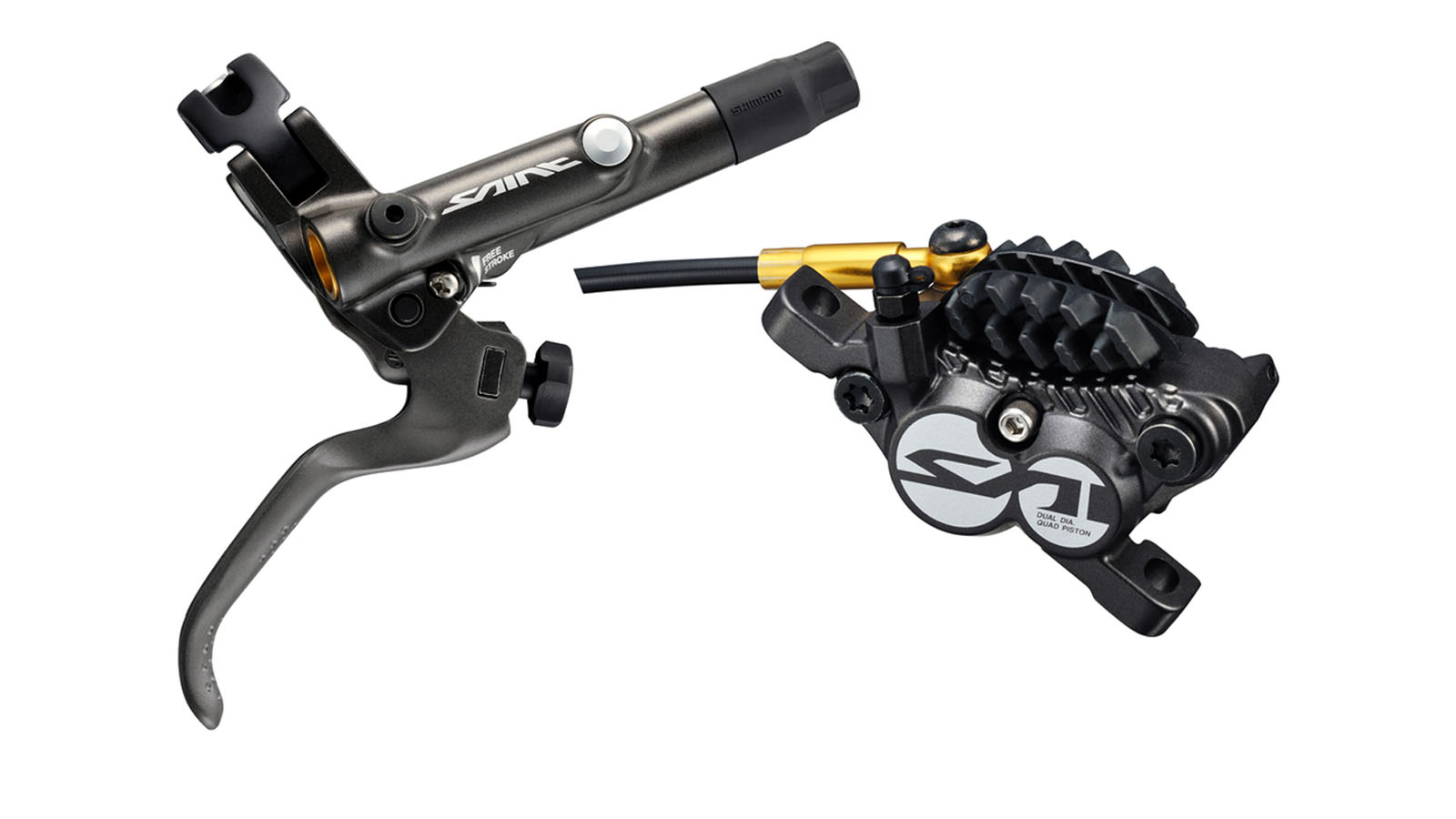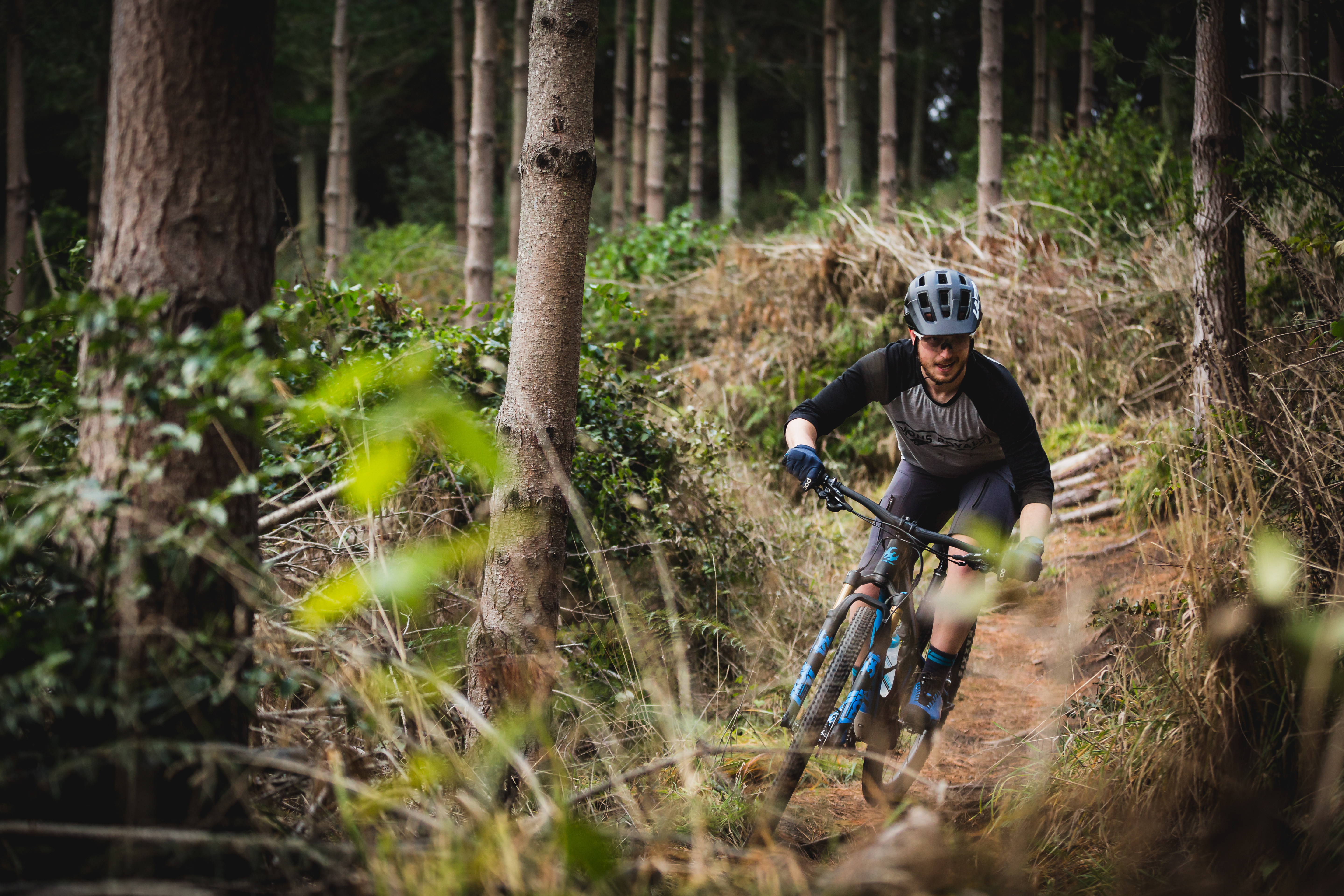Shimano mountain bike brakes range overview
Shimano mountain bike brakes are well renowned, but if you're unsure of what makes Zee different from XTR, here's everything you need to know

When it comes time to throw the anchors down, squeeze the lever on Shimano mountain bike brakes and the power is immediate with the rotors slowing you from warp speed to a snail's pace in no time. Shimano disc brakes offer a consistent bite point, but some riders feel they are a bit grabby when compared to its biggest competitor SRAM— one is not necessarily better than the other, but they do feel different.
Shimano offers a wide range of brakes at different price points and for different riding styles. It can all get a bit confusing, so keep scrolling for our guide to Shimano brakes so you can find the right pair for your mountain bike.
Shimano XC and trail disc brakes
Why trust BikePerfect

Shimano XTR
Specifications
Reasons to buy
Reasons to avoid
The crown jewel in Shimano's range of off-road components is XTR. Using the highest quality materials, XTR brakes come in specs designed for XC and Marathon racers, and a four-pot trail and enduro version too.
The XC brakes rely on the XTR BR-M9100 two-pot brakes which feature the brand's Mono-Body construction and ceramic pistons. The XTR brakes use a new, highly rigid brake hose and one-piece caliper which is said to increase braking power and reduce stroke and lag time by 30-percent over its predecessor. The M9100 uses the I-Spec EV clamp and features a carbon lever blade and a new lever shape. As weight is a top concern for XC racers, the M9100 levers feature a magnesium master cylinder and ditch reach and bite point adjustment as well as the Servo Wave level control. Shimano says this cuts 26g off the total weight — claimed at 204g per side.
The M9120 brakes are the trail spec and feature a four-pot Mono-body single-piece caliper, which offers a claimed 10-per cent increase in braking power over the M9020. With the additional braking power comes an increase in the amount of heat that's put into the system, so the M9120 brakes utilize finned IceTech brake pads to help manage the temperature. The levers are similar to their XC tuned relatives, however, they have tool-free reach adjust and bite point adjust in addition to the magnesium master cylinder and carbon brake lever.
The final piece of the XTR brake puzzle is the rotors. Using the brands two-piece center lock design, they are available in 140mm, 160mm, 180mm and 203mm and feature the brands Ice-Tech Freeza construction including the heat shedding paint on the exposed parts of the aluminum core, and are claimed to weigh 147g in the 203mm size

Shimano Deore XT
Specifications
Reasons to buy
Reasons to avoid
Shimano's second-tier groupset is Deore XT, which sees a cut in price but not in performance. There is only a single lever on offer which utilizes the I-Spec II clamp band and features a tool-free reach adjust and free stroke adjust. The lever shape and master cylinder remain unchanged from the previous version and so does the stealthy black paint job.
The brake caliper comes in both two and four-piston varieties. Neither gets the one-piece monoblock construction; the two-piston is claimed to weigh 392g, while the four-piston is claimed at 410g. Both use a banjo-type connection inside the hose routing ceramic pistons and the finned brake pads.
Like their more expensive cousins, the XT level rotors feature the Ice-Tech and Freeza heat management. They are just a tad heavier on the scale, said to weigh 164g in the 203mm size, and don't feature the special heat-dissipating paint.

Shimano SLX
Specifications
Reasons to buy
Reasons to avoid
Shimano just relaunched its veritable SLX groupset, it's the workhorse in the range and still perfectly comfortable in a high-performance setting without the price tag.
The new SLX brake levers are nearly identical to the XT version including the updated bracing angle for a claimed 10 percent improvement in support and stability of the lever, tool-free reach adjustment and an I-Spec EV compatible collar. The SLX lever also carries through the same master cylinder design and the Servo Wave cam system. The only significant difference is the levers don't have bite point adjustment.
The caliper is available in two- or four-piston versions with the latter featuring finned brake pads and a banjo connection inside the housing. While the two-piston version doesn't offer quite the same drop-the-anchor power, at about 320g per wheel including the lever, it finds the right balance between performance and weight and provides the same sharp bite point as the higher-end versions.

Shimano Deore M6000
Specifications
Reasons to buy
Reasons to avoid
Deore M6000 benefits from quite a lot of trickle-down technology with the hydraulic brakes seeing many of the same design features as Shimano's more expensive brake sets. The levers feature the Servo Wave pad technologies and tooled reach adjust. For the M6000 version, Shimano has upgraded the clamp to the I-Spec II and the updated integrated master cylinder design, but no bite point adjustment at this level.
The brake calipers have received a complete makeover with the bleed port being moved to the opposite side and a new larger pad available in both resin and metal varieties. The pistons are also made from resin instead of the ceramic versions and aluminum alloy used in the higher-end brakes. Finally, the calipers are available in silver and black finishes.

Shimano Alivio
Specifications
Reasons to buy
Reasons to avoid
Shimano Alivio is at the entry-level end of Shimano's MTB groupsets, and you're likely to find this as an OEM spec on complete bikes. They make both brake and shifter combos as well as brake levers, both for hydraulic disc brakes.
Both are stripped-down versions of the Shimano hydraulic brakes featuring an integrated master cylinder tuned for entry-level riders, and the reach adjust is designed to accommodate small hands.
The caliper is a basic two-pot hydraulic setup, which features one-way bleeding technology.

Shimano Acera
Specifications
Reasons to buy
Reasons to avoid
Acera M3000 is the lowest groupset Shimano offer that's designed to withstand trail usage. Despite being the most affordable The hydraulic brake caliper has two pistons, and the brand's one-way bleed technology. For the latest model update, Shimano changed the bleed nipple location for an easier bleeding experience.
Shimano downhill disc brakes

Shimano Saint
Specifications
Reasons to buy
Reasons to avoid
Shimano designed the Saint under the philosophy of 'pure gravity' and with that, the brake set is designed to stand up to the rigors of DH racing. At the bars, the levers themselves are shorter and see both free stroke and tool-free reach adjustment. For the best possible modulation, the Saints use Servo Wave articulation and the levers use the I-Spec B clamps, sacrificing a bit of weight for a more robust (read: crash-proof) mount. The Saint brakes are designed to be used in collaboration with Shimano's super stiff, 3-layer high-power brake hose, which provides a more consistent lever feel under extreme braking conditions.
The four-piston calipers are ultra-rigid and feature ceramic pistons to limit how much heat is transferred from the brake pad to the fluid inside. They take advantage of every Ice Technology heat management trick Shimano has to offer, including the finned brake pads.

Shimano Zee
Specifications
Reasons to buy
Reasons to avoid
While Zee plays second fiddle to Saint in Shimano's pricing structure, similar to the relationships between Deore XT and XTR, there is virtually no loss in performance. The only real difference is the price and the liberal use of exotic materials.
Zee gets the same four-piston caliper as its more expensive compatriot including the dual-size ceramic pistons.
The levers are almost identical to the SLX version; however, the Zee swaps the tool-free reach adjustment for a tooled version and non-slip lever blades. The Zee levers still have Shimano's Servo Wave articulation, utilize metallic pads and Shimano's one-way bleed servicing.
Shimano disc brake technology explained
1. Servo Wave action
Servo Wave action is Shimano's terminology for the accelerated pad travel from when you pull the lever until the pad makes contact with the rotor. The brand says that the Servo Wave cam also increases the power on offer at the lever after contact so the more your pull the lever, the more power you get.
2. Ice Technologies and Ice-Tech Freeza
On a long descent, it's not all that uncommon to experience brake fade as the rotor and pads get hot. Shimano's Ice-Tech rotors and pads utilize a few different cooling technologies to manage the heat build-up.
The Ice-Tech rotors see a clad rotor blade with an aluminum core sandwiched between stainless steel on the exterior to improve cooling via heat radiation and fins on the rotors and brake pads.
The gravity-oriented brakes see a long, banjo-style connection to help reduce the amount of heat transmitted from the caliper to the hose. Brake calipers as low as SLX are also shod with oversized ceramic pistons to limit heat transfer into the caliper and reduce heat-induced brake fade.
3. Center Lock
Shimano pioneered the Center Lock rotor which uses a lock ring instead of six individual bolts to mount the disc to the hub. Install and removal of center lock rotors is much easier than six-bolt, and Shimano says the spline-based mount enhances precision and rigidity, thereby improving braking efficiency.
4. Free Stroke and Reach Adjust
Free stroke and reach adjust do precisely what the names suggest. Free stroke refers to the distance from the initial lever position to the pad contact point; this requires a Philips head screwdriver to adjust.
Reach adjust allows the distance of the lever from the handlebar grip to be changed. There are both tooled and tool-free reach adjustment options depending on the lever and where it sits in the Shimano components hierarchy.
5. Four Piston
Available in most of the component levels a four-piston caliper sees four pots that control the brake pads. Four-pot brakes offer considerably more power and modulation than those with only two pistons, but they are heavier.
Four-pot brakes utilize two different sized pistons with the smaller of the two moving the pad at the entrance to the caliper, and the larger piston at the back. This prevents the wobbling of the rotor, reduces noise, and creates a broader contact area for the pad.
6. One-way Bleeding
Shimano developed its one-way bleeding system to streamline the process of refreshing brake oil and purging air from the system. Using a funnel at the brake lever and a syringe at the bottom, the oil routing is one way and the oil is pushed in at the bottom, carrying air that may be caught in the system towards the top as the new oil flows through.
7. Mono Body
Only available on two pot XTR level brakes, the Mono-Body caliper is machined from a single cold-forged block to maximize stiffness and reduce weight.
8. I-Spec EV
I-Spec encompasses both the brake mounting clamp, but also shifter adjustability. Mirroring SRAM's Matchmaker to a degree, the I-Spec clamp opens in the middle meaning you don't need to remove your grips to install the brakes. Shimano says it allows for a broader range of lever angle adjustment and increases brake lever rigidity by moving the brake assembly inwards, it also creates an extra point of contact between the lever and the bar.

Born and bred in Colorado, and now based in Australia, Colin comes from a ski racing background and started riding as a way to stay fit through the summer months. His father, a former European pro, convinced him to join the Colorado State University collegiate cycling team, and he hasn't stopped since. It's not often he pins on a number nowadays, and you'll likely find him in search of flowy singletrack, gravel roads and hairpin corners. Colin has worked at Bikeradar and is a regular contributor to Australian Mountain Bike and Cyclist magazines.
Rides: BMC Team Machine SLR01, Trek Top Fuel 9, Ibis Ripley
